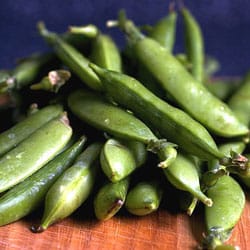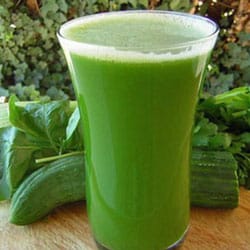Heirloom Peas Have a Long History
Heirloom peas or garden peas originated in middle Asia, from northwest India through Afghanistan and adjacent areas. A second area of development lies in the Near East, and a third includes the plateau and mountains of Ethiopia. In these areas wild field peas have been found, along with many cultivated forms of P. sativum, but wild P. sativum has never been found. Vast areas in southern Russia and southern Europe still have large tracts of field peas growing wild. The garden pea was an early introduction in northern Europe and Asia and as far west as England and east as far as China.
Early heirloom peas were cultivated for their dry seed, similar to today’s “split peas” for soup. The varieties known a thousand years ago had seeds that were much smaller, dark colored from the modern garden peas. They were an ideal supplement to an early hunter gatherer lifestyle that was just beginning to transition into agriculture. They were durable, easily carried and their germination lasted for several years. They needed only a short season to produce food for both man and animals and flourish in soils too poor for early cereal grains which were being adapted to early agriculture at about the same time. No doubt that during times of scarcity of animals to hunt, peas became a chief source of protein.
Primitive garden peas have been found during excavations beneath houses of the Swiss lake dwellers around Morssedorf, Switzerland dating back to both the Bronze and Stone Age. Peas also were found in a Hungarian cave dwelling, believed to date back even further. Charles Pickering says in his 1879 Chronological History of Plants, “Of culinary vegetables, Pisum sativum the only kind that can with certainty be traced as far back as the Stone Age;…” He also mentions a type of Fava bean, parsnips and carrots found in the excavation.
Garden peas have been found in the excavations of ancient Troy. The Aryans from the East are thought to have introduced peas to the Greeks and Romans, who grew them in ancient times. Theophrastus, considered by many to be the Father of Botany, described peas in detail and their cultivation in his Enquiry into Plants in Chapter 8 which is devoted to cereals and peas. He is the author of the oldest existing treatise on botany, having died in 287 BC. U. P. Hedrick wrote about Theophrastus in his 1928 book The Vegetables of New York, “He wrote at a time when gardening, farming, orcharding, and the cultivation of flowers and medicinal plants were far advanced, when all food plants derived from the Old World had been named, domesticated, had their varieties and had been cultivated for many centuries. He was writing in a advanced stage of agriculture and civilization; quotes other books about plants and had much of his information from predecessors whom he looked upon as ancient as we look upon him as belonging to an age long, long ago.”
Heirloom peas were one of the most widely grown vegetables of northern Europe during the Middle ages, as their description and cultivation was evident in almost every early gardening or agricultural book of any language in middle and northern Europe. They were almost as widely grown as the early cereals as an easily produced storehouse of nutrition for the population and for food for the armies of the time. In 1066 they were one of the chief crops grown in England, and by 1400 peas were frequently mentioned in the “Expenses of Collegiate and Monastic Houses”. From the 1400s to the mid 1600s, peas were so commonly eaten that “pottage” and “porridge” were terms meaning peas as well as the dishes made from them. Sugar peas were common and described in John Worlidge’s Systema Horticulture, or the Art of Gardening in 1677.
Eating freshly shelled peas, or what were called green peas became a very popular delicacy with the aristocracy after the restoration of Charles II when they were parched, fried or boiled. Louis XIV was highly fond of them, and so was his entire Royal court. In a letter written by Madame de Maintenon dated 10 May 1696, she describes, “The subject of Peas, continues to absorb all others, the anxiety to eat them, the pleasure of having eaten them, and the desire to eat them again, are the three great matters which have been discussed by our Princes for four days past. …It is both a fashion and a madness.” Commoners didn’t partake of “green peas” until the early 18th Century.
Heirloom peas were introduced very early on by European explorers, possibly starting with Columbus himself on his 2nd voyage. It seems they were widely traded and spread rapidly. In 1535 Cartier mentions the natives of Hochelaga (now Montreal) growing peas, and in 1613 French traders obtained peas grown by the Ottowa River by the native tribes. Francisco Vasquéz de Coronado mentions “small white peas” in New Mexico in 1540. In 1614 peas were a food staple of the New England native tribes.
Subsequently, American gardeners have embraced heirloom peas wholeheartedly with many breeders improving yields, flavor and pod size. We have a nice selection in our Heirloom Pea Department for you to enjoy!



